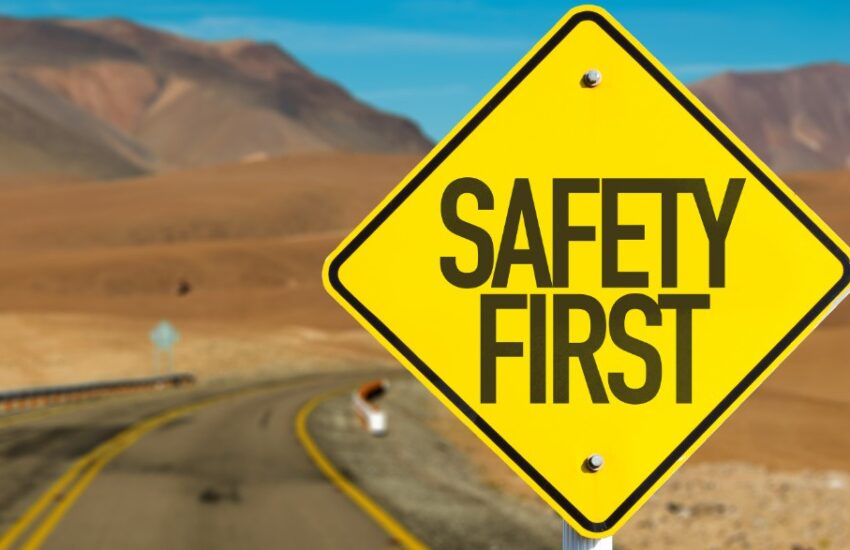The seemingly easy maneuver of overtaking other vehicles on the road accounts for a high rate of accidents and fatalities across the globe. Passing a stationary vehicle is a simple task for most drivers but overtaking moving vehicles require skill, practice, and experience. The more traffic, the more precautions should be taken when overtaking. In this article, we’ll read about how to overtake safely on a road. In this article, we’ll read about how to overtake safely on a road.
Let us break down the overtaking rules for you.
How to overtake safely on a road
Basic Overtaking Rules To Follow
When overtaking a vehicle, always overtake on the right side unless you are passing a vehicle that is slowing to turn right or waiting. You can also overtake on the left side when there are marked lanes on the road.
Most importantly, ensure that you have enough space on the road to pull back after overtaking another vehicle and there is no vehicle coming your way. You should judge the power of your vehicle, the available road space, and the availability of any side street from where other vehicles could pull out from.
If the vehicle you are trying to overtake is moving at a faster speed, it will take you longer to overtake it. Check your vehicle mirrors and signal other road users to give them sufficient warning, look for your blind spot, and then safely overtake the passing vehicle. Remember to pull back in if you find other vehicles in the rearview mirror of your vehicle.
Give way to the traffic in the lane that you are moving into after overtaking. If the road on which you are driving has a speed limit of 80 kph or more, or there is a sign to keep left unless overtaking, you should drive in the left lane unless you want to turn right or you are going to overtake another vehicle.
Here are some of the situations in which you must not overtake:
● If you are unable to get a proper view of the traffic ahead and you are uncertain of whether you can overtake safely. This can happen when you are driving in a heavy rain or foggy weather situation or when you are approaching a curve or crest.
● Another vehicle is halted at a railway crossing, pedestrian crossing or intersection.
● Where a road narrows down.
● You have to pass through an unbroken line unless you have a broken line on your vehicle’s side of the road, or you are passing through a cyclist, you must wait until the line on your vehicle’s side is broken.
● You must refrain from overtaking situations which can create danger for pedestrians such as near schools, parking areas, or building complexes.
● Overtaking on busy city and crowded roads should be avoided as numerous signals are exchanged by drivers in such cases. Different-sized vehicles and traffic congestion further add to the problem.
● If you see that the dividing lines are changing to double unbroken lines ahead.
● It is also dangerous to overtake on gravel roads as these don’t have any markings to remind the driver where it is dangerous to overtake. Moreover, the dust makes the visibility worse.
If you see the sign “Do Not Overtake Turning Vehicle” on the back of a huge/long vehicle, it is most likely to turn out to the right before taking a left turn, you must not overtake it on the left side of the vehicle if it is indicating left as it creates an accident risk.
The Overtaking Position
Overtaking vehicles is a compromise of safety. Before overtaking a vehicle for at least two seconds allow you to stop and understand the road situation ahead. The overtaking position should be closer to the vehicle that you are trying to overtake than the following position. This shortens the distance you need to cover while alerting the vehicle in front of you that you are planning to overtake. You should avoid staying in this position for long as it will provide you with less time to react if the vehicle ahead slows down suddenly or a vehicle unexpectedly appears in front of you.
If you fail to overtake for some reason, you must go back to your following position and increase the distance between you and the vehicle ahead. You should maintain a safe distance while following as it will increase visibility and allow you to safely overtake.
Summing Up
The overtaking decision should be made only after gauging the road and traffic situation ahead. Moreover, overtaking at night is more dangerous due to the concentration dip of the driver and low visibility. Enrolling in a driving school for driving lessons is super helpful in this case. You have an instructor to guide you and help calm the nerves, if any. When you overtake a vehicle at night use a low-beam headlight to prevent flashing your beam into another vehicle’s mirror. You can briefly flash your vehicle headlight to warn the vehicle in front of you that you are planning to overtake. Lastly, maintain your and others’ safety while overtaking on the road.
